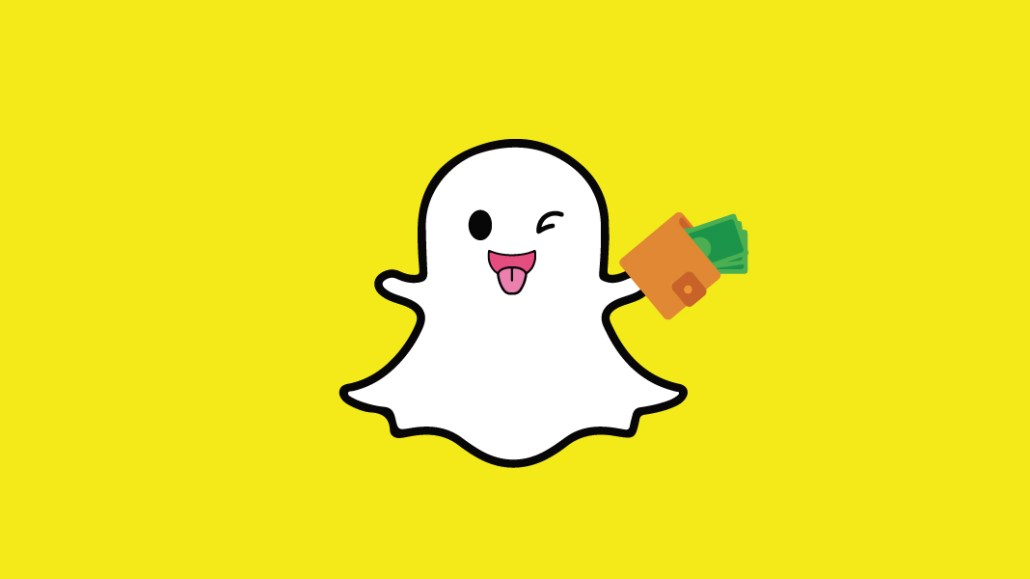‘We’re netting out with higher revenue’: Publishers reaping the benefits of Snapchat’s strong second half

Publishers focused on bright spots for the second half of this year have found one in Snapchat.
Over the past quarter and change, revenue per thousand impressions (RPMs) are up for publishers’ Discover content, both year over year as well as quarter over quarter, as the video-focused platform continues to grow audience and advertisers continue to feel comfortable spending to reach them, according to sources at four different media companies that distribute content there.
Some of that boost has come from an uptick in CPMs. Erica Patrick, vp and director of paid social media at MediaHub Global said her group is tracking increases of between 10% and 20% year over year for the fourth quarter.
Some more can be chalked up to changes Snapchat made this spring, when it began plugging non-skippable Snap Ads into slots where it couldn’t sell its pricier Snap Commercials. That helped boost RPMs on publishers’ content simply by improving the fill rate, an issue that Snapchat Discover publishers have complained about in the past.
The strong growth has many publishers feeling bullish about Snapchat going into next year, despite the continued competition from other publishers in Discover and the recent launch of an ostensible in-house competitor for user eyeballs in Spotlight, Snapchat’s TikTok knockoff.
“We’ll trade the drop in viewership for higher CPMs, because we’re netting out with higher revenue,” one of those executives said, adding that the RPMs on their Snapchat content were up to 20% higher year over year, and around 35% higher than they were during the second quarter of 2020.
While publishers and platforms alike have enjoyed a boost in audience this year, Snapchat has benefited substantially. The platform had 249 million daily active users in the third quarter of 2020, up 18% year over year, according to quarterly earnings Snap posted last month. Those users brought more engagement too — the average number of snaps published on the platform every day rose 25%.
“That [engagement] bell curve hasn’t flattened out yet the way some people thought it would,” said Paul Greenberg, the CEO of the video strategy firm Butter Works.
As the users have come in, advertisers have followed. While most advertisers still regard Snapchat as a test investment, Mediahub’s Patrick said, they are more open to spending money there this year, thanks to several factors, including the July boycott of Facebook and the progress Snapchat has made with its ad portfolio.
“They really have managed to diversify and stay competitive,” Patrick said, noting that the platform has become especially attractive for brands that have lower funnel needs.
And that progress has also made it easier for advertisers targeting young audiences to keep spending. “[Those clients], they’re seeing Snapchat as a tried and true player at this point,” Patrick said.
Snap’s stock price has effectively tripled year over year, leaping from around $15 in November 2019 to $45 this month.
Those boosts have been accompanied by more competition inside Discover, which has brought more volatility in how some content performs inside Snapchat, sources at two different media companies said; a source at a third said they hadn’t seen that same volatility.
“There’s been a touch less overall viewership, because there’s so much more content on the platform,” said one of those sources. “But [Snapchat]’s been really smart and forward-thinking about how they deal with it.”
How the addition of Spotlight will affect this momentum remains unclear, and opinions are mixed. An Axios mention of the feature this summer suggested that Spotlight would include a mixture of user, creator and publisher content, but the content appears heavily tilted toward user-generated content so far.
In the absence of publisher content — and, for now, any kind of advertising— some publisher sources worried that Spotlight could potentially cannibalize some of the time Snapchat users were spending watching their content. While the user experience and content types are different, Spotlight still has prominent placement within Snapchat’s app. “It’s essentially reducing the real estate for publishers by 50%,” one source said.
Others saw the experience as different enough that it wouldn’t be a problem. One source mentioned they liked the possibility of using Spotlight to build the brands of their creators
“We’re not worried by having additional content discovery features to surface the best content to the audience,” said Victor Potrel, vp of partnerships at TheSoul, which owns media brands including 5 Minute Crafts. “We know our brands resonate with the audiences who live on these platforms so we welcome any new ways that we can interact and engage with them.”
More in Media

What publishers are wishing for this holiday season: End AI scraping and determine AI-powered audience value
Publishers want a fair, structured, regulated AI environment and they also want to define what the next decade of audience metrics looks like.

Media giant Essence launches a marketplace for Black women-led brands
Essence has launched WeLoveUs.shop, a new online marketplace dedicated to Black women-led brands.

In Graphic Detail: The state of AI referral traffic in 2025
The stats reveal a new audience pipeline forming outside of traditional search and social platforms.






